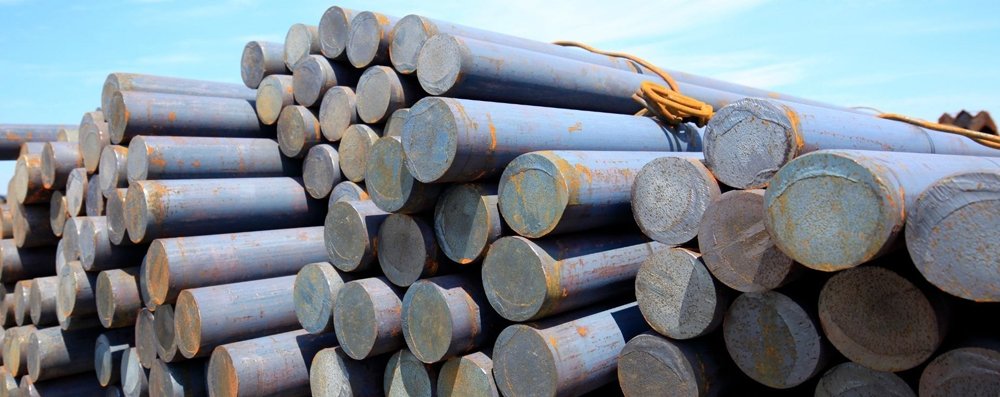Introduction
SAE 1018 is a low-carbon, mild steel grade with excellent weldability and slightly higher strength than SAE 1010. It offers a good combination of toughness, strength, ductility, and easy machinability. SAE 1018 is a widely used engineering material, especially where good surface finish and tight dimensional tolerances are required.
Properties of SAE 1018 Grade:
- Superior weldability and machinability
- Good balance of strength, ductility, and toughness
- Uniformity in chemical composition
- Suitable for case hardening and carburizing
- Better mechanical properties compared to lower carbon steels
Uses/Applications of SAE 1018 Grade:
- Shafts and axles
- Gears and pinions
- Spindles
- Bolts and studs
- Machinery parts
- Fixtures and tools
- Automotive components
- Structural applications
- Precision machined parts
Chemical Composition (Typical):
| Element | Content (%) |
| Carbon (C) | 0.15 – 0.20 |
| Manganese (Mn) | 0.60 – 0.90 |
| Phosphorus (P) | ≤ 0.04 |
| Sulfur (S) | ≤ 0.05 |
| Iron (Fe) | Balance |
Mechanical Properties (Typical):
| Property | Value |
| Tensile Strength | 440 – 480 MPa |
| Yield Strength | 370 MPa (min) |
| Elongation (in 50 mm) | 15 – 20% |
| Reduction of Area | 35% (min) |
| Brinell Hardness (HB) | 126 – 179 HB |
Physical Properties:
| Property | Value |
| Density | 7.87 g/cm³ |
| Melting Point | ~ 1460 – 1490 °C |
| Modulus of Elasticity | ~ 200 GPa |
| Thermal Conductivity | 51.9 W/m·K |
| Electrical Conductivity | ~ 10% IACS |
Forging:
- Forging is best done at temperatures between 1150 °C and 1260 °C, with finishing temperatures around 870 °C.
- Cooling should be done slowly after forging to avoid stress or distortion.
Heat Treatment:
- Annealing: Full annealing is performed at 870 – 910 °C followed by slow cooling.
- Normalizing: Normalizing at about 890 °C enhances toughness and refines grain structure.
- Hardening: SAE 1018 is not intended for through-hardening but can be surface-hardened by carburizing processes.
- Stress Relieving: Stress relief heat treatment is usually done at temperatures between 540 – 650 °C.
Dimensional Tolerances:
Tolerances follow standards like ASTM A108 for cold-finished bars and ASTM A29 for hot-rolled bars:
- Cold Drawn Bars: Tolerances typically ±0.001″ to ±0.003″
- Hot Rolled Bars: Slightly wider tolerances based on bar size.
Special tight tolerances are available for precision applications.
Machinability:
SAE 1018 offers excellent machinability, rated around 70% relative to AISI 1112 steel. It machines well with standard practices and provides a smooth surface finish with appropriate tool use and cooling.
Corrosion Resistance:
SAE 1018 carbon steel does not possess inherent corrosion resistance and is prone to rust when exposed to moisture. Protective coatings like painting, galvanizing, or plating are recommended when used in corrosive environments.
Weldability:
SAE 1018 offers outstanding weldability with all conventional welding techniques, including:
- Gas welding
- Arc welding
- Resistance welding
Preheating is generally not necessary, but in some cases (for thicker sections), a low preheat may be recommended to avoid cracking.
Available Form:
- Round Bars
- Square Bars
- Flat Bars
- Hexagonal Bars
- Bright Bars
- Wire Rods
- Coils
- Customized Profiles
Available in Hot Rolled, Cold Drawn, and Turned & Polished conditions.
Conclusion:
SAE 1018 carbon steel bar is a highly versatile material offering a great mix of strength, ductility, and easy machinability. Its excellent weldability and availability in precise dimensions make it a favorite for a wide range of structural and mechanical engineering applications. While it does require protective measures against corrosion, its overall performance makes it a dependable choice for industries requiring dependable mild steel.
Related Products :20C8, ASTM A36, 20MN2, 55C8, 40C8, C45, ASTM SA-105, C50, C20, C55, EN3B, C55 Mn2, C60, C45, EN9, EN8, EN8D, IS 2062, EN43B, S355J2G3, S40C, SAE 1010, SAE 1018, ST52.3, 20MN2, Maps


